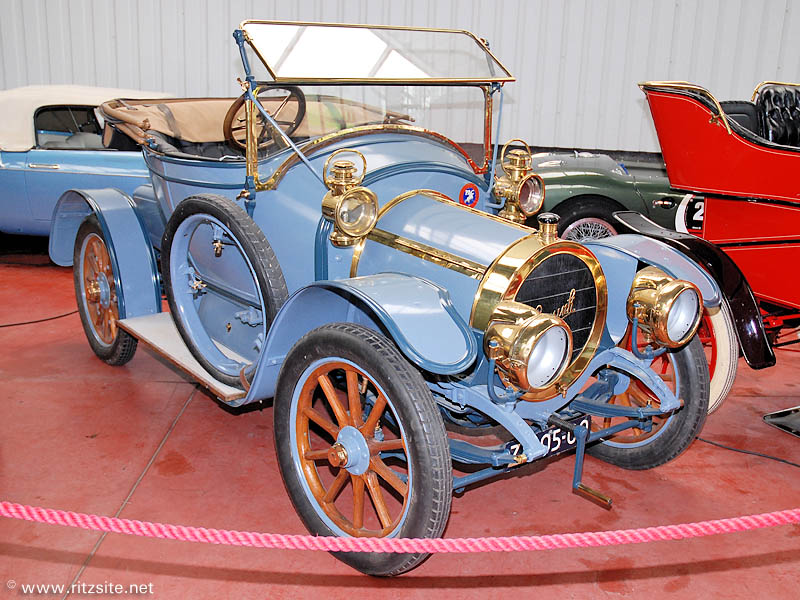|

Eysink 10/12 HP - 2-seater body - manufactured in 1912
Unlike its Western European neighbors Germany, Belgium and England the tiny but wealthy country called The Netherlands didn't sprout many famous car manufacturers. In the early days of motoring however there were plenty of attempts to start car production. Best known make of that era is of course Spyker but the credit for putting the first petrol-powered Dutch car on the road goes to a manufacturer named Eysink. That was as early as 1897 and the car itself was of a remarkably advanced design featuring a single cylinder Benz engine placed in front, a steering wheel instead of a tiller and a tubular frame construction.
The Eysink factory was founded in 1886 in the city of Amersfoort and named after its founder, D.H. Eysink. At first the company concentrated on bicycle production, adding motor-assisted versions later on. Eysink's two sons, Menno and August, saw the growing potential of new forms of transport like motorcycles and automobiles and started the development of new products which lead to the first car. It was soon followed by a range of motorcycles which was to become the company's mainstay.
After a small production run of the first car design it was followed by 10 HP and 12 HP models with self constructed 2-cylinder engines and shaft drive which were made up to 1905. Car production was resumed in 1907 with a range of 4-cylinder cars of 10/12 HP, 16/20 HP and 20/30 HP denominations and even a 6-cylinder 30/40 HP model featuring two carburettors which was quite a novelty back then. All these models were quite large and competed with similar Spyker models.
To increase production numbers a more affordable model was needed. It appeared in 1912 as the 6/8 HP; it was a light car dubbed "Bèbè" (fashionably French for baby) based on some Malicet & Blin components and powered by a smaller 4-cylinder engine. Unfortunately its fortunes were hampered by an unreliable pressure-lubrication system operated by the exhaust. Even so things were going reasonably well for Eysink and sales were even boosted by the outbreak of the first World War during which The Netherlands remained neutral. The absence of imported cars from the countries which were in conflict meant that the locally produced models had hardly any competition and also the Dutch army placed some sizeable orders.
Around 1917 there came an end to this and soon Eysink car production was in trouble. There was a strong increase in imported and locally assembled American cars on the market and there was no way Eysink could compete with this cheaper, mass produced opposition. An attempt was made to revive the small Bèbè model in 1919 complete with a fancy V-shaped radiator but it was to no avail. Car production was terminated in 1920, after about 325 cars had been made in total since the first one in 1897. Eysink now turned completely to the far more successful production of motorcycles, mopeds and bicycles which lasted up to 1956.
Of those 325 Eysink cars only one has survived to this day. It's the attractive 4-cylinder 10/12 HP 2-seater model shown here. The reason this one has survived while the others didn't was that it had had an accident during the first World War. Due to the lack of replacement parts for it at the time it was stored by the owners until after the war. It probably had to wait for repairs longer than expected but by then its rarity was sufficiently recognized to ensure its survival. And now it's a wonderful memorial for an almost forgotten manufacturer of quality cars responsible for the introduction of car production in The Netherlands.
© André Ritzinger, Amsterdam, Holland
|
